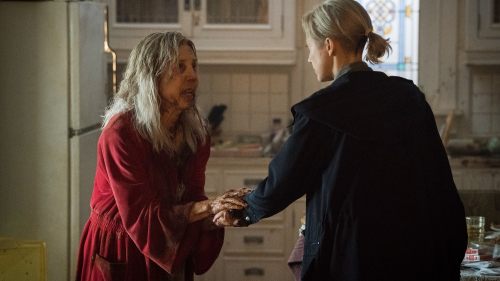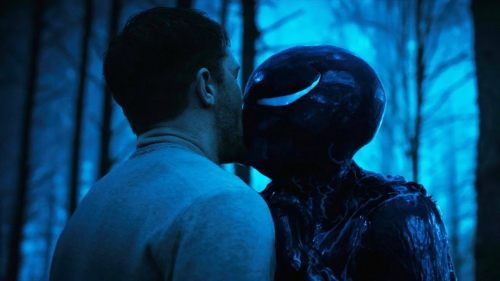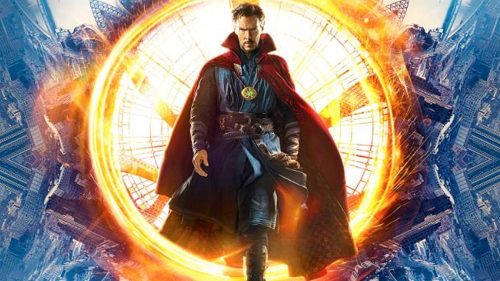OZ THE GREAT AND POWERFUL Review: It’s Good And Wonderful
What would The Wizard of Oz be like if it were made today? The film that we know as a classic began as an attempt to cash in on the recent success of another fantasy film, Walt Disney’s Snow White and the Seven Dwarfs. L. Frank Baum’s book was heavily modified, and some magical elements were toned down (it’s only in the movie that Oz is a dream). The production was delayed and troubled, with half a dozen directors working on it. It took an army of special effects artists to make the movie’s fantastical settings and creatures come alive. The Wizard of Oz came in way over budget, and did not become profitable until ten years after its initial release, despite being a hit at the time.
In a lot of ways The Wizard of Oz was exactly like the kinds of movies that are made today. If The Wizard of Oz were to be made today, it would probably be a lot like... Oz the Great and Powerful.
I intend that to be a very large compliment to Sam Raimi’s film. I’m an enormous fan of the original The Wizard of Oz, and consider it one of the greatest movies ever made. While Oz the Great and Powerful is not as good as the 1939 film (not enough songs, for one thing!), it’s certainly the most worthy successor to come along in the nearly 75 years since.
In some ways Oz the Great and Powerful is a fetishtic homage to the original film. Raimi attempts to mimic and recreate as much of the tone and feel of that film as possible, right down to opening the movie in a sepia-toned Kansas. He goes the original film’s magical switch to color one better, though, beginning his film in a boxy 1.33:1 ratio before expanding the parameters of the frame into a gorgeous widescreen composition.
There’s plenty of CGI on display, but Raimi uses it wisely. This doesn’t feel like Alice in Wonderland, a film adrift upon pixels. Raimi uses his CG to create the same sense of almost-reality that came with the original film’s stage backdrops and matte paintings, as well as to create extraordinary digital characters. There’s a flying monkey named Finley and a little girl made of china who are never totally photoreal but are always Oz-real, and they both work as fully realized characters within the film. There’s a scene where James Franco’s Oz is sitting in a shattered teapot, talking to the two of them, and you completely forget that Franco is the only human being actually captured by cameras.
Oz the Great and Powerful is a prequel story that tells how the humbug Wizard of Oz came to the storied fantasyland. It uses elements from L. Frank Baum’s Oz sequels for background (Oz’s real name, Oscar Zoroaster Phadrig Isaac Norman Henkel Emmannuel Ambroise Diggs, comes straight from Baum), but also leans heavily on the iconography of the 1939 film, making it a sort-of prequel to that movie, and also a sort-of in-canon Oz story.
James Franco’s Oz is a sham magician in a traveling circus; he’s a rakish raconteur who seduces girls in every town and who wishes he was a better man. He gets that chance when, while high-tailing it from a circus strongman whose girl he’s nailed, Oz is swept away in a balloon through a tornado into a strange new land.
The opening ‘real world’ bits are the first sign that Oz the Great and Powerful might actually be good. I was enjoying the look into what a louche jerk Oz is, but kept wondering to myself when the movie would - as it seemed it must - self-destruct under the weight of CGI and a modern desire to rough up the edges of the tale, to add grit and darkness. The wonderful opening circus bits are followed by a troubling tour of the Land of Oz’s CGI landscapes, but just as the movie threatens to careen off a precipice, Mila Kunis shows up, giving the film a new human dimension.
Kunis is Theodora, a beatiful but hopelessly naive witch who immediately falls in love with the handsome man from the sky. She’s convinced that he’s the wizard of prophecy, the one who has come from another land to free Oz from the bondage of the Wicked Witch. Seeing a pretty girl he can bang, Oz plays along as she brings him back to the Emerald City. Later, seeing the riches of the Emerald City, Oz continues playing along, agreeing to kill the Wicked Witch.
Joining him on his quest are Finley the Flying Monkey (voiced by Zach Braff), a lovable creature who owes Oz a life debt, and the Little China Girl (Joey King), the only survivor of a Wicked Witch attack on China Town, a land where everyone is made of, you guessed it, fine china. They soon discover that something is rotten in Oz, and that the Wicked Witch who lives in a menacing graveyard may not be the true terror, and that the real problem may be sitting on the throne back in Oz.
At one point Robert Downey Jr. was going to play Oz, and thank god he didn’t. James Franco, while not extraordinary, is wonderful in the role as yet another of Sam Raimi’s buffoonish heroes. He’s a selfish dope, and he’s not particularly capable; while RDJ could have pulled off the selfish bit, it’s unclear that he’d ever allow us to question his innate coolness. Franco is happy to play Oz as a bumbling ass, and his eventual (spoiler) heroism is all the better for it.
The Land of Oz is bright and semi-cartoony and not entirely real, so the actors have double duty - not only must they play their characters convincingly, but they also have to keep the whole thing from feeling like Toon Town. Everybody succeeds; Kunis’ Theodora is heartbreakingly gullible before she’s heartlessly evil, and Rachel Weisz’ Evanora (Theodora’s sister) is broadly villainous without being cheesy.
If there’s a weak human link it’s Michelle Williams, playing Glinda the Good Witch. Part of that, though, comes in the nature of Glinda - she’s all good and all sweet and all trusting, and as such isn’t the most dramatic of characters. She actually gets fairly overshadowed by the CGI characters. Although considering Finley is so goddamned cute and sweet, there’s no shame in that.
If most blockbusters seem aimed directly at boys aged 9 to 13, Oz the Great and Powerful is the rare blockbuster aimed at girls in that age range. This isn’t an Alice-like revisionist piece, where swords and armor come into play. The final battle between Oz and the witches involves lots of trickery and outsmarting and is completely and totally non-violent. There are scary moments, and Raimi has brought his funhouse spook-a-blast sensibilities, but he understands that ‘fun’ is the operative part of funhouse. There are jump-in-your-seat bits and silly bits and bits where Oz gets beat up and menaced by inanimate objects - all the things you’d want to see in a Sam Raimi film - but it’s all got a friendlier, more obviously cartoony tone. Still, this movie is Sam Raimi, front to back.
Since it is Sam Raimi, Oz the Great and Powerful is a must-see in 3D. It's the first time Raimi has played with the gimmick, and he uses it like the gimmick it is, with spears poking our faces, evil flying monkeys coming right through the screen, and lots of feelings of depth and vertigo. The opening credits are so good in 3D that they demand at least one viewing with a pair of polarized glasses.
Oz the Great and Powerful isn’t as good as The Wizard of Oz - it could have used more of that film’s brisk breeziness, as a deadly dull second act threatens to kill all your goodwill towards it - but it’s definitely a proper companion to that movie. Sam Raimi has created a perfect tone of whimsy and adventure, never feeling the need to darken things up, or to wink his way through the movie. This isn’t a movie about warriors, it’s a movie about magic.
The movie also does something rare for a prequel: it left me wanting more. I wanted to know how Glinda and Oz seemingly drifted apart in the years between the end of this film and Dorothy's arrival. I want to know what drove Oz to seek the death of the Wicked Witch of the West, especially considering the role he had in creating her. And I even want to see cameos from beloved characters like the Scarecrow and the Tin Woodsman; while the Cowardly Lion shows up in a nice, understated moment, this film only teases at those characters.
I'd actually be okay with Sam Raimi telling more tales in the Land of Oz, eventually getting himself up to the events of L. Frank Baum's The Wonderful Wizard of Oz... and telling that story again, too. Sacrilege? Maybe... okay, definitely, but I can't help but feel that Oz is in the right hands for the 21st century.



